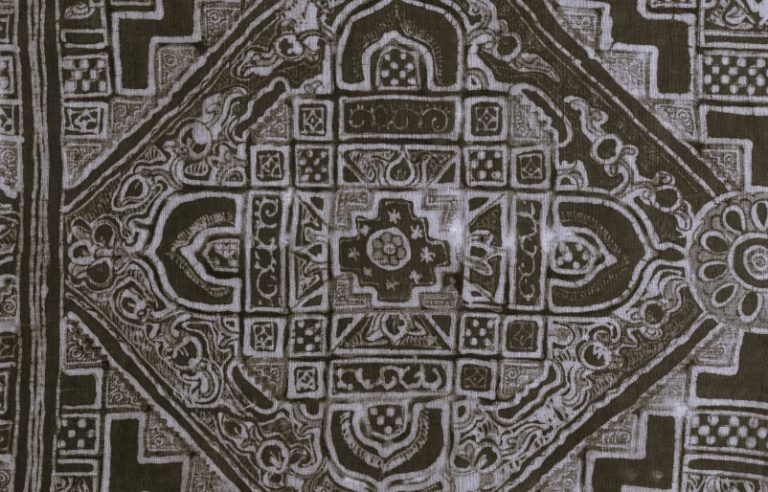

How symbols of devotion can be repurposed as tools of recruitment, and how algorithms can deliver them to audiences far beyond their intended circles.

By Matthew A. McIntosh
Public Historian
Brewminate
The Cross and the Rifle in the Same Frame
A scroll through certain corners of Instagram looks familiar enough at first glance: a man flexes in a gym mirror, a woman posts a photo of trail running at sunrise, another video shows a family gathered for prayer. Yet nestled in these seemingly ordinary frames are hashtags and captions that signal something darker. A crucifix pendant hangs over a semi-automatic rifle. A Bible verse overlays an image of armed men in camouflage. The fitness coach with tens of thousands of followers slips in references to “holy resistance” and “preparing for the inevitable.”
This is the emerging face of Christian nationalist militia recruitment online. Groups like the self-styled 13th Northeast Guerrillas have learned to translate an insurgent subculture into the aesthetics of lifestyle branding. Where pamphlets and word-of-mouth once served, Instagram now provides the stage. It offers an endless audience, algorithmic reach, and the polish of influencer culture. What was once fringe and hidden circulates now through glossy images and short videos that look no different than thousands of other creators’ content.
Instagram’s Uneasy Role
Meta, Instagram’s parent company, formally prohibits content that promotes violence, terrorism, or organized militias. Yet enforcement has always struggled against the scale and sophistication of actors who know how to skirt the rules. Posts rarely feature explicit calls to arms. Instead, they rely on symbols and dog whistles: biblical references to battles against evil, patriotic backdrops, family portraits, and photos of weapons paired with scripture.
The effect is subtle but cumulative. Repeated exposure to such images normalizes the fusion of Christian devotion with martial identity. Scholars of extremism have long pointed out how digital platforms amplify radical messaging not through overt declarations, but through the slow layering of symbols, metaphors, and shared language. In that environment, a fitness influencer posing with a rifle while quoting the Book of Joshua can become both aspirational and recruitment material.
Instagram’s challenge is compounded by the platform’s reliance on algorithms that reward engagement. Content that provokes reactions spreads quickly, and extremist accounts benefit from the same dynamics that make a dance challenge or recipe tutorial go viral. For users stumbling into these circles, the shift from fitness content to militia rhetoric can be startlingly fast.
The Fusion of Faith and Networked Extremism
Christian nationalist militias are not new in the American landscape. The militia movement has roots reaching back to the 1990s and even earlier, fueled by suspicion of federal authority and a belief in armed self-reliance. What is new is the explicit fusion with Christian symbols in online recruitment.
The cross and the rifle have long shared space in the cultural imagination, particularly in rural America, where church and gun ownership often intertwine. Yet the transformation of this cultural overlap into a digital recruitment tool is striking. Academic studies on digital extremism describe this as “networked radicalization,” the blending of offline ideology with online platforms that spread it beyond its natural boundaries.
Faith provides a moral frame. Militias provide a narrative of struggle and resistance. Influencer culture provides the distribution mechanism. Together they create a recruiting pipeline that feels more like lifestyle marketing than radicalization. To the casual scroller, the appeal lies not in obscure ideology, but in the promise of belonging, identity, and moral clarity delivered through the same medium that sells shoes, protein shakes, and travel packages.
The Allure of the Influencer
The genius of this strategy lies in its mimicry of mainstream digital culture. Instagram influencers already blur the line between personal identity and commercial endorsement. They market their own lives as aspirational, offering followers a template for meaning, health, and fulfillment. When militias borrow this model, the product they are selling is not clothing or supplements but an entire worldview.
A single post can collapse the distance between spiritual devotion, physical fitness, and armed readiness. “Your body is a temple, keep it strong for the Lord” sits alongside imagery of military drills and home arsenals. For followers predisposed to nationalist or religious sentiment, the synthesis is powerful. It creates a sense of moral purpose while framing readiness for violence as both natural and righteous.
Critically, this style also disarms critics. To call out an account that posts prayers, family photos, and workout tips is more difficult than targeting one that openly calls for revolution. By embedding the extreme within the ordinary, militias make their messaging resilient against platform moderation and attractive to those who would never seek out overt extremist content.
Policy Limits and Cultural Drift
Platforms have begun to recognize this dynamic. Meta has removed hundreds of militia-affiliated accounts since 2020. Yet research shows many reemerge under new names, cloaked in slightly different language. Enforcement lags behind adaptation. Regulators face the same problem. The First Amendment protects religious expression, and militias exploit that cover to present themselves as communities of faith rather than paramilitary organizations.
The cultural drift, however, may be more worrying than the specific accounts. By weaving together religion, nationalism, and lifestyle aesthetics, militias have tapped into deeper currents of American identity. They draw from long traditions of conflating faith with armed struggle, while updating the imagery for the digital stage. What results is not only recruitment but normalization, the quiet acceptance of ideas once viewed as extreme.
A Growing Accessibility
What once required insider connections now arrives on a teenager’s phone with a single scroll. This accessibility is what makes the trend so significant. Christian nationalist militias have become digitally visible, no longer hidden in isolated compounds or fringe communities. They live inside the same feeds as makeup tutorials and cooking reels.
The implications reach far beyond content moderation. They touch on how digital culture reshapes the boundaries between faith and politics, and between devotion and extremism. The most troubling aspect may not be the militias themselves, but the way ordinary users begin to absorb the idea that faith and force belong naturally together.
Conclusion: Faith in the Feed
The rise of Christian militia content on Instagram is not simply a story of extremist groups finding a new platform. It is a story about the blending of religious fervor, digital culture, and the aesthetics of influence. It is about how symbols of devotion can be repurposed as tools of recruitment, and how algorithms can deliver them to audiences far beyond their intended circles.
The line between mainstream and fringe is porous. In that space, guns, crucifixes, and Bible verses are no longer just personal expressions of faith. They become signposts in a recruiting campaign that thrives on visibility and resists easy policing. For a society that depends on secular institutions and pluralist values, the challenge is not only to monitor content but to reckon with the cultural forces that make such content compelling in the first place.
Originally published by Brewminate, 08.29.2025, under the terms of a Creative Commons Attribution-NonCommercial-NoDerivatives 4.0 International license.


